May 23, 2021 (Updated April 3rd, 2024)
Mind Mapping in Education: Curriculum Planning and Beyond.
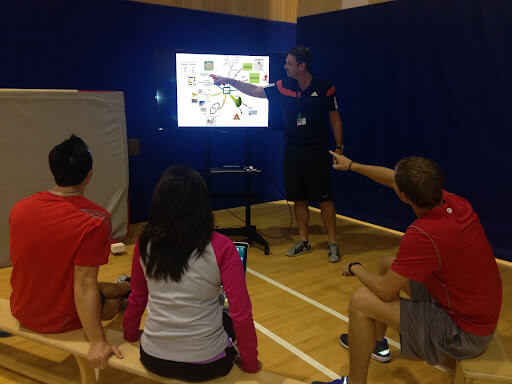
Mark Williams, the Head of Physical Education at Stamford American International School in Singapore has been using mind mapping in education for the past ten years. Here he explains how he and his department use the technique, from curriculum planning to the assessment process.
“When I initially started looking into the use of mind maps within my department and my own teaching, I was unsure about how they could aid the curriculum planning process, and how they could be used to show that students were building on their existing knowledge. This led me to look at the use of mind maps in education, in two different ways…”
The planning process
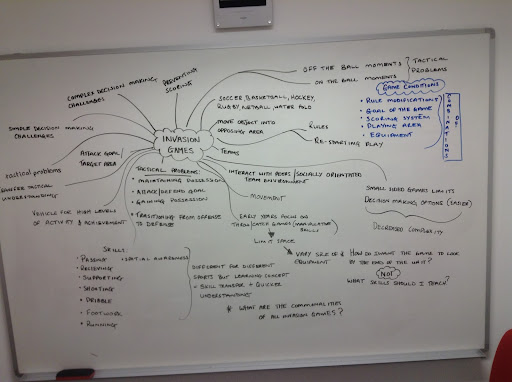
In both my current and previous schools, the planning process has always started with a ‘brainstorming’ session on a whiteboard. We would add everything we knew about the unit we were going to cover, and then highlight key concepts that would provide a vehicle for inquiry, and related concepts that would provide depth and detail. We would then develop our concepts, lines of inquiry and statements of enduring understanding, which relate and connect concepts.
This process has essentially remained the same, but recently we have implemented a task management tool, DropTask [now Ayoa], into our planning phase. Using DropTask [Ayoa], we are able to group all of our ideas together and for each grade level, prioritise what topics need to be covered in relation to our scope, sequence and planning documentation, and differentiate between the grade levels.
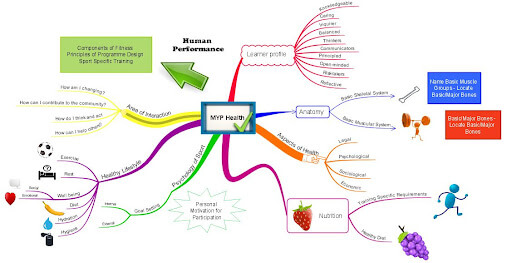
This mind map highlights the key areas that we wanted to cover for sport and health related fitness across the grade levels. With this being a new unit in our school, we could then decide what areas we would add or take away at other grade levels. From here, we could begin to explore and develop our significant concept that would drive the inquiry process and unit questions.
Student assessment
The second, and probably the most exciting way I have used mind maps, is for formative assessment. In our school system, statements of enduring understandings are usually written collaboratively by teachers, and presented to the students at the start of a unit for them to ‘unpack’ and develop an understanding of. This process, although beneficial to the students, can potentially stop students from developing their own ideas about an inquiry, as it has been pre-designed for them.
Using mind maps has allowed students to develop their own knowledge, without any preconceived ideas of where the inquiry should lead. Rather than limiting their thinking to one notion, in a mind map they are free to explore different paths and ideas. Mind maps allow them to use teacher questions to explore concepts, and to pick out the information that they need in order to develop deeper understandings that will enable them to create their own statements at the end of the unit.
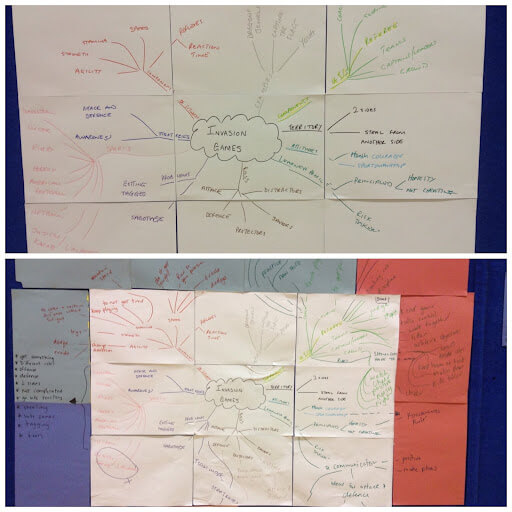
This picture shows Grade 5’s understanding of ‘Invasion Games’ in week one, and additions made in week two and beyond. Through introducing conceptual and factual teacher questions each lesson and by referring back to the mind map, students are able to develop and build on their prior knowledge. They can start to pick out the important facts about ‘Invasion Games’ that allow them to explore their own questions and thoughts, for example, what do all Invasion Games have in common?
I build on the mind map weekly and develop it using the iMindMap [now Ayoa] software. This allows students to see the growth of their knowledge in a clear, one word format; something we may not have time to do on the class mind map.
I have continued this process across the course of a unit, and at the end gave them my statement of enduring understanding to spark debate, and allowed them to deepen and amend their understandings. The final process is to allow students to use the mind map, teacher questions and the conceptual understandings they have developed to produce a statement that sums up the unit for them (this can be used as part of the summative assessment process). Student generated examples are below:
- Invasion Games require teams to develop strategies that allow them to get in and out of an opposing team’s territory.
- Invasion Games have opportunities to switch between attack and defence.
- Teams manipulate an object, territory or opponents to achieve a common goal in Invasion Games.
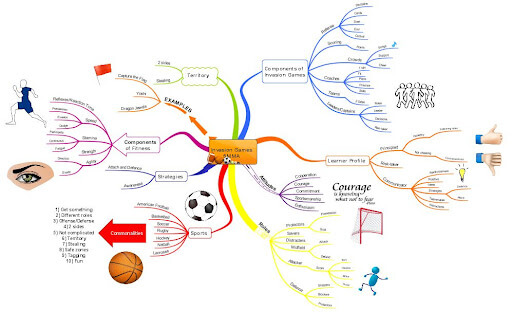
Benefits of mind mapping in education- for teachers and students
Developing mind maps and keeping to one word per branch helps students to focus on, and develop branches that deepen their understanding through imagination, organisation and critical thinking. As a department, the planning process is becoming more efficient and meetings more focused. We also have the freedom to share the mind maps and add to them as our units develop which has obvious advantages during the reflection process.
Mind maps are amazing visual tools that students can watch grow and build on each lesson. They allow students to organise their ideas and understand concepts more effectively. Through the teacher asking questions that deepen students’ factual and conceptual understandings, students are able to add to their knowledge base and develop a never ending mind map of their learning journey. mind maps allow them to develop key concepts and create related concept branches until all their ideas become connected, reflecting their deeper understanding.
Conclusion:
This case study was originally recorded in 2014, when Mark Williams spoke about his experience in using mind mapping and Ayoa with his students. He rightly lists the benefits of mind mapping for students as well as teachers. Mind mapping has helped his students to build on their knowledge without any prejudice and has also enabled both teachers and students to become more efficient and focused in their work.
Where next?
During the conversation, Mr. Williams mentioned that in the future, he would like to add links, relevant images and information from the internet to students’ work. “This will help students make sense of the maps and make connections to future units, as well as be a great visual reminder of the unit and inquiry journey that has followed,” he said.
The new Ayoa software now allows users to do all of it. It also allows them to export mind maps into word docs for further use, therefore, it is the perfect digital platform to enhance your creativity and productivity.
You can keep up-to-date with Mark by following him on Twitter, here.
Want more? Take a look at some of our other mind mapping articles for teachers:
- How teachers can make lessons more interesting with Ayoa
- 6 Mind mapping examples for students and teachers
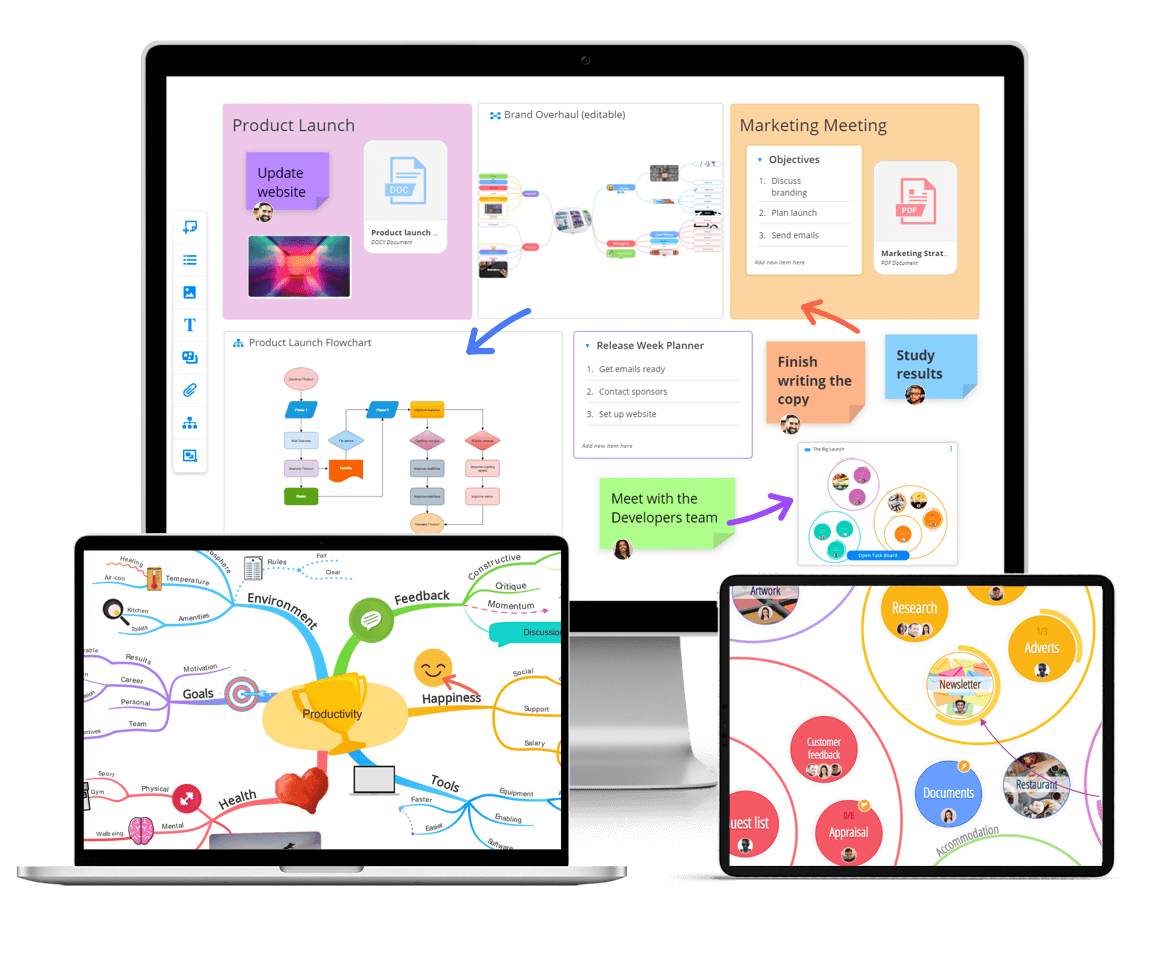
The all-in-one remote work toolkit
Ayoa is an all-in-one platform that allows teams to collaborate seamlessly while working from home. Integrations with Dropbox and Google Drive allow you to stay productive and avoid switching between apps.
Try it for free